Jasmine Birtles
Your money-making expert. Financial journalist, TV and radio personality.

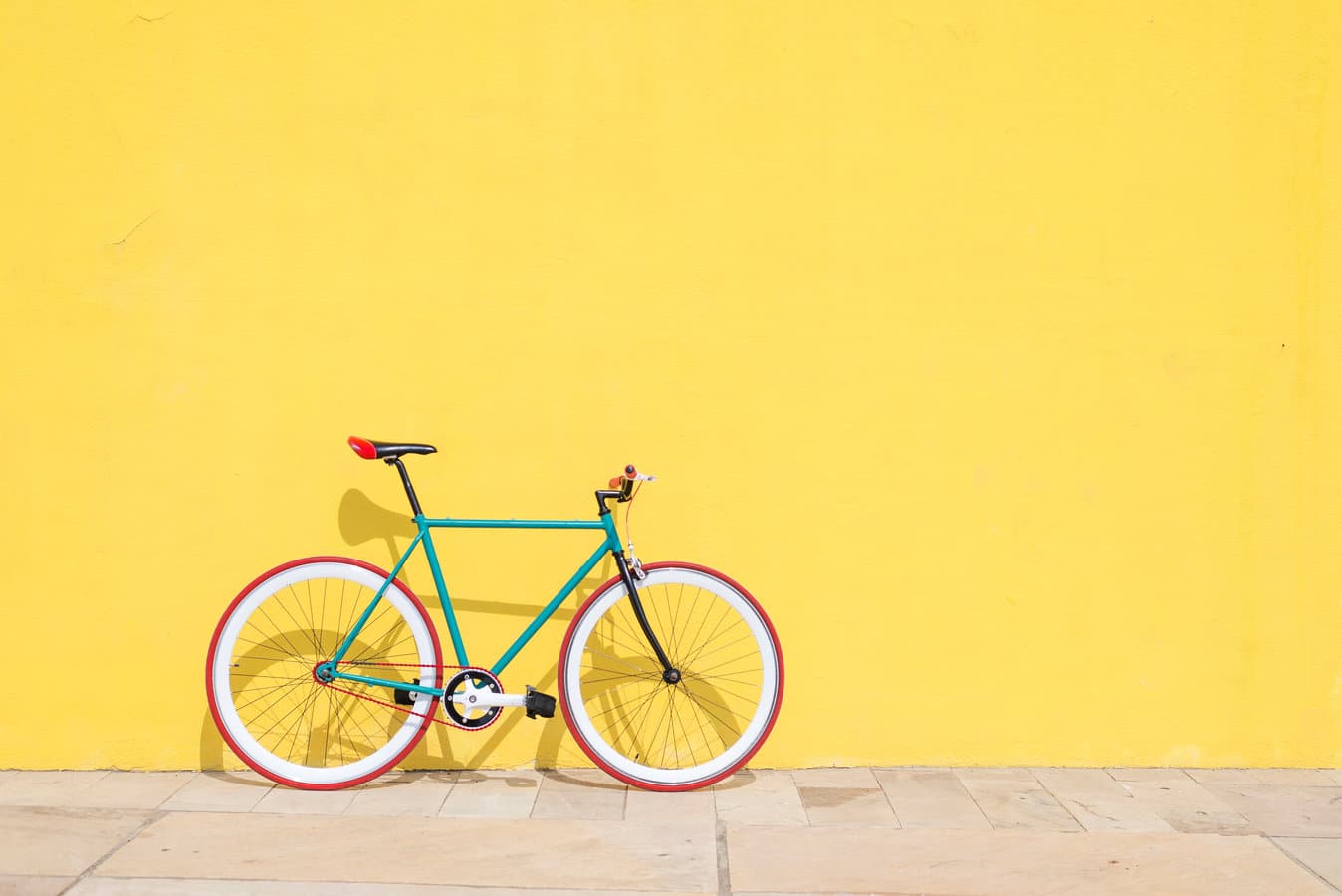
With the world in lockdown, our personal exercise time has become more valuable than ever before. As some of us go back to work, too, cycling seems like a great option compared to public transport.
Exercise has become a staple for our mental health during lockdown. For many a long walk, jog or run are the perfect way to get out and clear their heads. Others have taken to yoga and aerobics to scratch their itch. Why? Because these activities are free!
Cycling takes a little investment – but it pays off in the long-term. You’ll get your exercise fix – AND you can commute safely when it’s time to go back to work, too! Here’s how to get cycling on a tight budget.
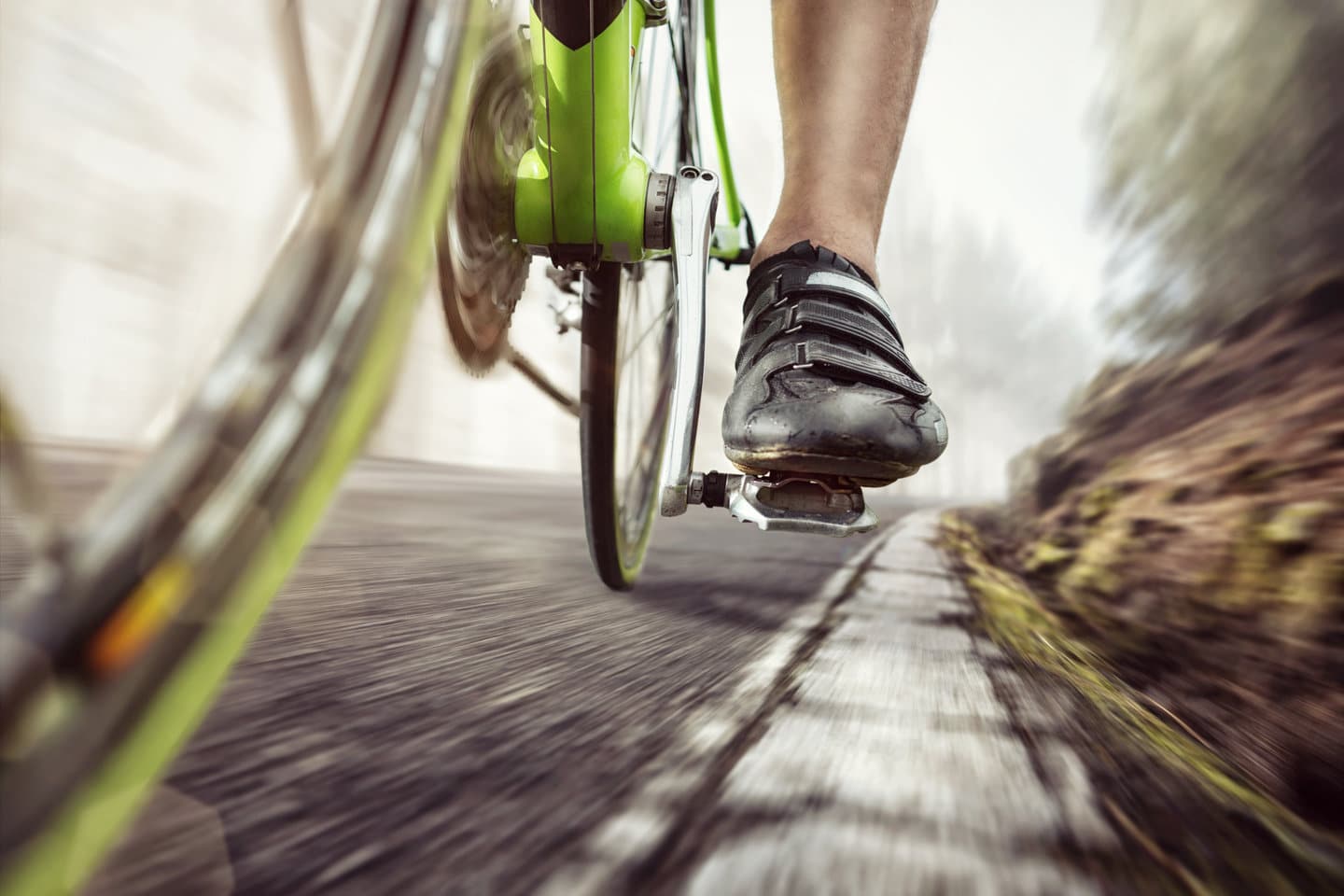
Firstly, because cycling is fun! Childhood memories of cycling around without a care in the world, the wind running through your hair as your heart beats a hundred miles an hour are easily replicated on a bike as an adult, too. The pure and simple exhilaration you get from a bike ride is something that can be appreciated at any age.
Cycling is inherently good for you and burns roughly the same calories as jogging, with considerably fewer negative impacts on your joints and bones. It also lowers blood pressure, builds muscle and improves co-ordination. But biking more importantly makes you happier!
Sitting in traffic, navigating your way around a congested city centre, and travelling on overcrowded public transport are all things that raise your blood pressure and put you in a bad mood. Taking your bike instead cuts out the stress and pressure brought on by busy commutes, and helps improve your self-confidence and mood.
A bike isn’t just for fun though. For many, it’s a practical way of commuting to work. If you know you have a busy or stressful day at work ahead of you, then surely a freeing cycle to clear your head is better than sitting in a cramped bus on a bustling road filled with other people just trudging on through. Your time is yours – and it’s much easier to avoid traffic jams, too!
The Government wants to encourage people to get cycling to work. If more of us cycled instead of driving or taking public transport, our national damage to the environment will drastically decrease. Cycling is also ideal for weight loss and maintenance – which then reduces the pressure of weight-related disease on the NHS.
So, the Cycle to Work scheme could help you get a cheap NEW bike. It will cost you more in the long-term than a second-hand bike but is still cheaper than buying a brand new one on your own. However, if your employer runs the scheme, it’s worth looking into. There isn’t a single provider running the scheme, so check for your local one. The main ones include:
If your employer doesn’t currently use a scheme, encourage them to use one.
Your employer chooses the scheme they want to use. You’ll be given a unique code to sign up on the scheme website. Once your employer approves your application, you can choose a new bike, helmet, and safety accessories from major retailers like Halfords and Tredz. The scheme may also support local cycle shops, too.
You’ll collect your bike and the shop staff will make sure you’re kitted out correctly and that it’s the right size for you. Then, you can ride it away immediately!
The bike is paid for through salary sacrifice. This means a regular amount is taken from your monthly pay cheque before you’re paid. It comes out of your pre-tax earnings, so you’re saving on tax. There’s no need to pay anything up front – so you can ride away with a new bike and accessories without needing lots of cash first.
Your new bike doesn’t have to be straight out of a showroom, buying second-hand is more than good enough. Sure, your new bike may have lost the showroom shine and it wont have the most up to date specs, but shopping smart will help you spend a fraction of the price.
There are no shortages of places to find second-hand bikes advertised, and that can be daunting. Figuring out what is a bargain and what is a well disguised swindle will take time.
Ebay and Gumtree are great places to start, but dedicated sites like Preloved, Secondhandbikes, and Facebook groups are worth searching. It may be seen as old-fashioned these days, but never rule out looking in newspapers and noticeboards for a more “authentic” way of finding your second-hand gold, either. As shops start to open again, your local cycle shop is also a great place to find second-hand bikes. They might not be as cheap – but they’ll have had maintenance to ensure they’re roadworthy.
Don’t forget you can always request extra pictures of the bike from the seller to make your decision easier. Stay away from generic adverts that use stock pictures of the bike as new. You want to see the bike for sale, as it is.
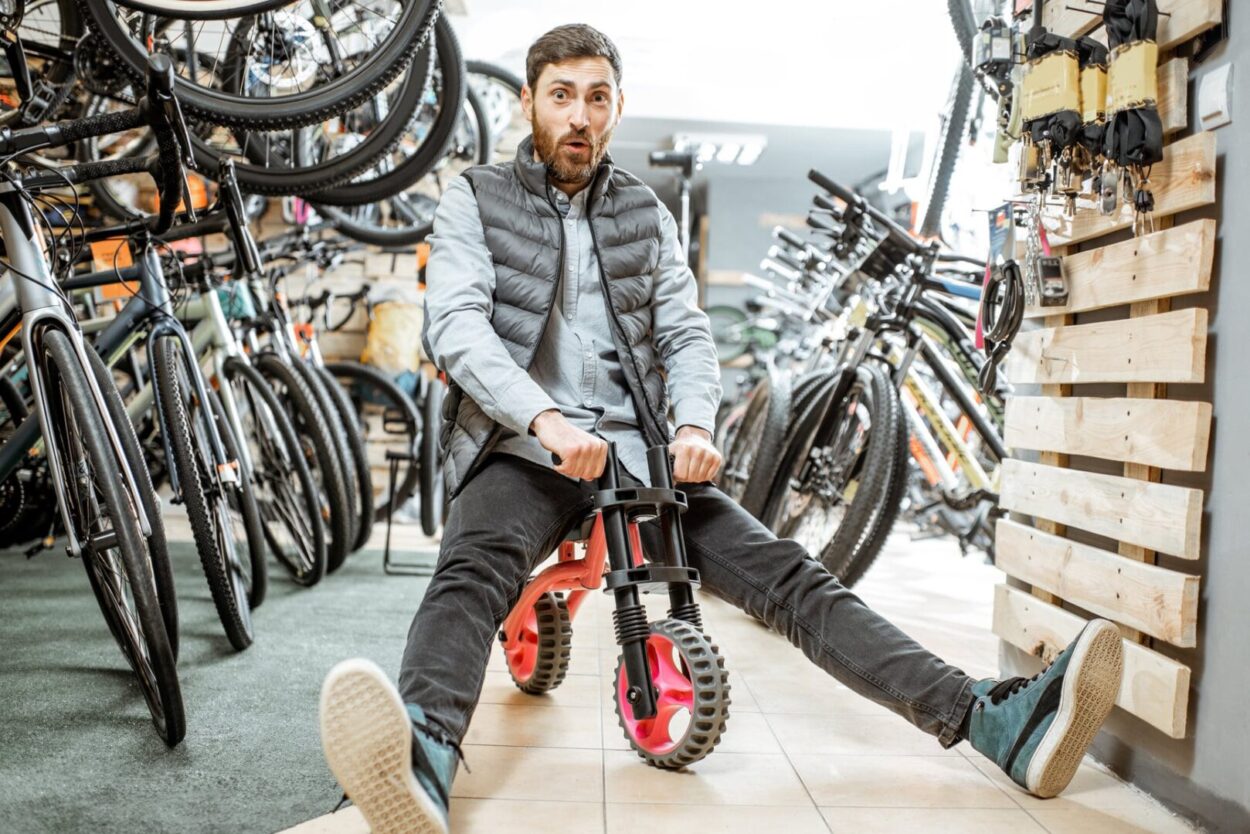
Once you’ve done a bit of research and slogged through all of the websites and classifieds to find the bike you’ve been searching for, it’s time to go and see it. Just because it suits you aesthetically and has everything you wanted doesn’t mean it is the bike for you!
If you’re struggling to find a good bike, you can read a ton of expert bike reviews, here. They’ll help you make informed buying decisions.
Go and see it, check it’s a good height for you, make sure it’s as good in person as it is on paper. Take it for a test ride, ensure you are happy it is as good as the advert says. You can always change your mind as the buyer right up until money has changed hands or pen has been put to paper.
Check:
Now you’ve purchased your new bike you have to make sure you keep it in fine working order. A second-hand bike is going to require more up-keep than a brand-new model, but it still works out as a cheap mode of transport. The ability to fix something yourself always brings a deeper feeling of satisfaction, too!
Regular maintenance is also the best way to keep the cost of cycling down. Keeping your bike in good condition is much easier than constant repairs caused by a poor condition! It also means you get to know your bike – so it’s easier to spot potential problems before they become a danger while you’re cycling.
You need a set of basic tools for your bike maintenance. Microfibre cloths are a must-have for anyone looking to maintain the look of their bicycle. It’s dirty work and not only are they absorbent, they will give you a streak free shine. Cleaning your bike is an absolute must! Mud adds to rust and wear, and can mean your chain, gears, or brakes don’t work properly.
Degreaser is the simple way to get oil and muck off your new wheels. Bike lubricants are water resistant, making them incredibly difficult to get off with soap and water. Counter-intuitively, you’ll also need a good supply of lubricants. Bikes have plenty of moving parts and they all have to be smooth running. WD-40 isn’t going to cut it either: invest in some heavy-duty bike lubricant to keep your bike moving smoothly. It costs just a few pounds and is well worth the investment!
Make sure you have a supply of good rubber gloves at your disposal any time you work on your bike, too. Working with so many oil-based products – and plenty of mud – is dirty work.
Screwdrivers, spanners, wire cutters, pliers, cable pullers and hex keys are all essentials. This might sound like a lot to buy, but you’ll find kits containing most, if not all, of these with ease.
The more you can pay, the higher-quality and longer-lasting your tools. When you’re getting started, a cheap set is all you need.
A good tyre pump and a bike stand will be the most-used tools in your arsenal. No more turning your bike upside down or leaning it against walls risking scratches or dents, just stick it on the stand and you can tinker to your heart’s content.
You can also pick up a cheap-but-effective flat tyre repair kit from the Pound Shop or similar places. If you can, keep this on your bike in a saddle or crossbar bag – it could save you when you’re out and about! It’s also a good idea to have a spare inner tube stashed in your kit, too – so you can replace your tyre wherever you are, especially if you’re planning on longer commute rides.
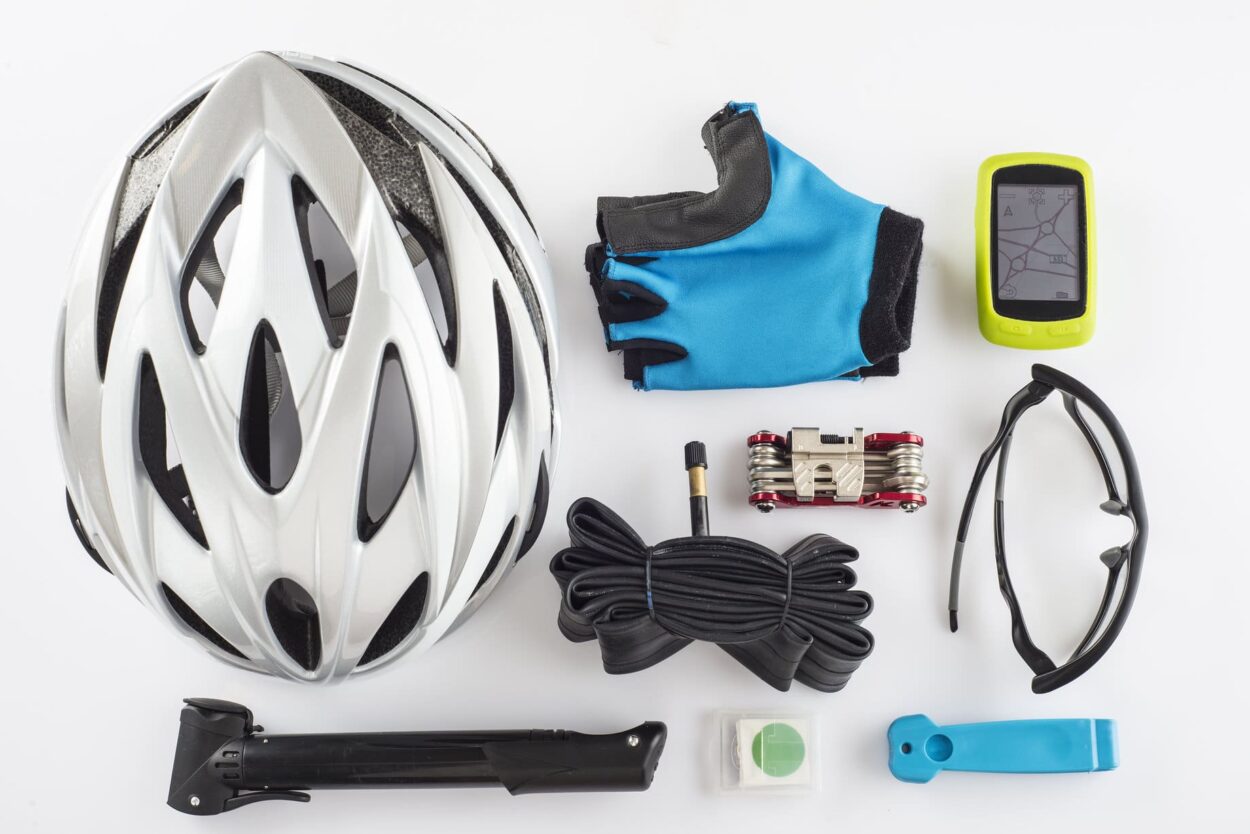
Bike? Check. Maintenance gear? Check. You’re almost ready to hit the road. All you need now is the right gear. If you’re just planning on short cycles to the shops or the office, then your normal clothes will do just fine, no need for anything special. The only things you need to invest in are a helmet, lights, and a bike lock!
As much as it’s tempting to get second-hand gear, never buy a second-hand helmet. You can get one from around £15 from a cycle shop (Halfords is open, and other shops will follow suit soon). Make sure it fits well – it shouldn’t move around on your head, but also needs to not be too tight. Most have adjustable bands, but will come in different head sizes. Try a few and make the investment – it could save your life.
The next thing you will want to invest in is a good quality water bottle and cage. Nothing is more important when out cycling than making sure you stay hydrated. Make sure you buy a water bottle and cage that go together though, you don’t want that falling out as you go!
Bike lights are a legal requirement, so make sure you’ve got a white light fitted to your handlebars and a red light to the back of your bike. Reflectors are a legal requirement, too. Some bikes have Dynamo front lights fitted – these are powered as you cycle – but won’t provide a constant light if you’re stopped.
A decent bike lock is worth the investment, too. You can pick up a budget bike lock for a few pounds, but these act more as a deterrent than stopping thieves from stealing your bike. Cable locks offer greater theft protection than D-locks or a padlocked chain, so that’s worth bearing in mind.
Cycle gloves are a worthy addition to your cycling kit. They’ll prevent friction from the handlebars and keep your knuckles warm against the wind. A cheap pair starts at just a few pounds, too!
If you want to get into cycling properly and go on some longer rides or join a local cycling club, then a pair of padded shorts will be a great investment. Your bum will thank you for it! Wear them on their own or hidden under baggy shorts if you prefer, as the comfort provided will help you out no end. Just remember, no underwear under padded shorts! You can spend upwards of £300 on a pair of padded shorts, but you can also pick up a pair for around £40, so there is something to suit all budgets.
Now that your bottom half is taken care of its time for your jersey. Again, on a short cycle your t-shirt collection will work just fine, but on longer trips you’ll need something a bit more suited to the job. Cycling jerseys are made from a fabric that is designed to keep you cool in the heat and keep you dry when you sweat. They have long zips for good ventilation and usually have pockets in the rear for carrying food and other supplies that you might need on longer trips. You can expect to pick up a jersey from as little as £5, making them a great value purchase for those looking to get even more into their new hobby.
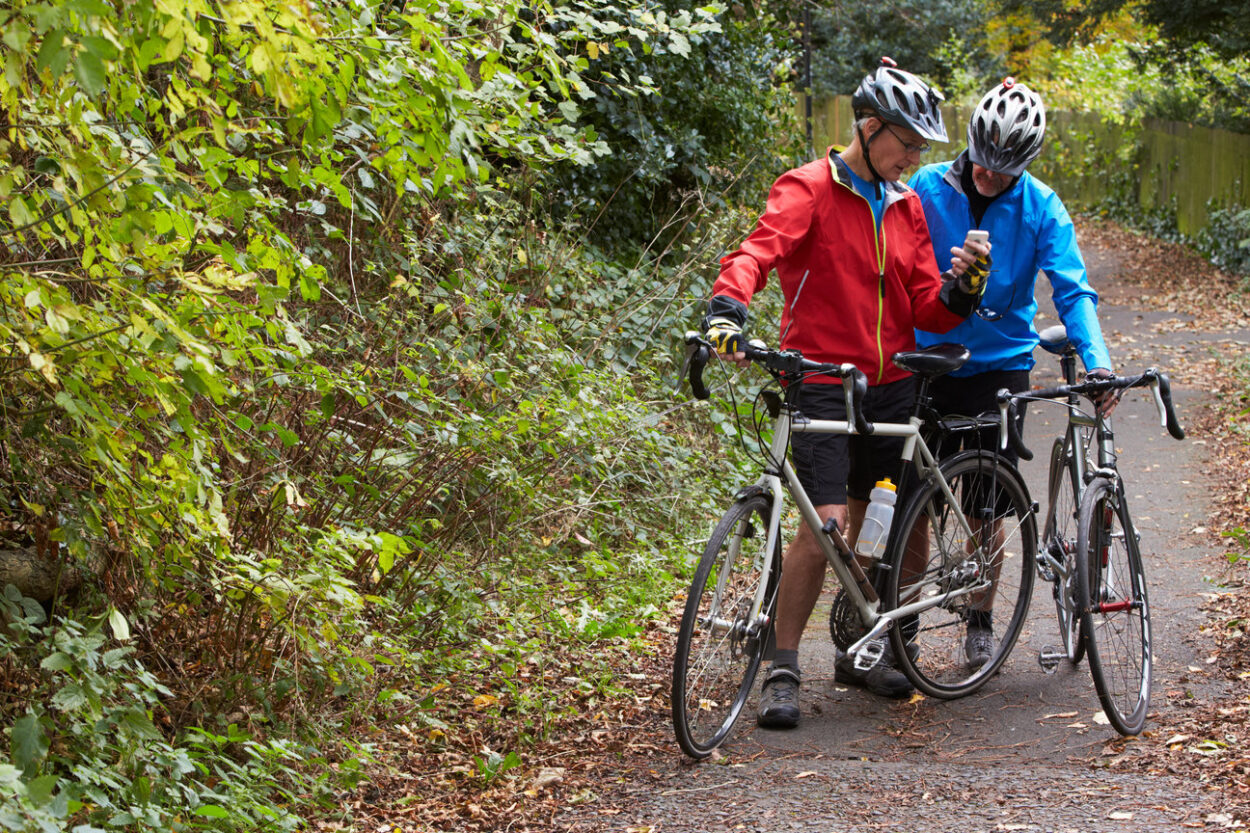
With all of your new equipment you’re going to want to hit the road and share your new-found hobby with your friends. The best way to do that is to use an app to share your trails. There are plenty of them around so take your pick. But if you want a helping hand here are a few of the best around at the moment.
Strava is basically a cycle computer on your phone. All rides uploaded to the app deliver automatic rankings of your times over popular stretches of road or trail along with a GPS map of where you rode. Strava is free to download but does offer some in-app purchases for those of you who want a bit more insight into your ride.
Wahoo Fitness is an app that pairs easily with Bluetooth sensors such as heart-rate monitors, speed sensors and progressive power meters. This app uploads your data to lots of different apps including Strava and MyFitnessPal among others. This one is for the data lover among you, eight different customisable pages of data on speed, heart rate, power and more. Wahoo Fitness is completely free to use.
Almost everyone will have the next app on their phone and that is Google Maps. It may seem basic, but the ability to turn audio on for turn-by-turn instructions is fool proof if you like to ride with headphones in. Just like you use your phone on the fly to find places, you can find cycling paths and bike friendly routs for all journeys. It should come as no surprise that Google Maps is free to use.
The Road Bike Manual is here to help you with your repairs. Any task you can think of, dozens of videos and hundreds of images to walk you through each step and allow you the accomplishment of performing these tasks yourself. The Road Manual app is available for the low price of £2.99 and that is a small price to pay for the independence it brings.
Cycling is just one of many ways to enjoy your daily commute or take exercise without spending a lot! Check out these articles for more ways to get fit on a tight budget for more inspiration.

Great articles. Thank you for sharing it in such an organized way. For me google maps is a lifesaver as I occasionally explore new places with my bike.
Great advice
Sound advice, great tips
Some great cycling ideas.
Think I may need to get my old bike out of the shed and dust it off!
Makes me want to take up biking again. It doesn’t have to be expensive, just safe! Stick to cycle paths if you don’t feel safe on the road and please use your bell and lights when neede.
Ooh yes. Cycling is great – particularly in this lovely weather!